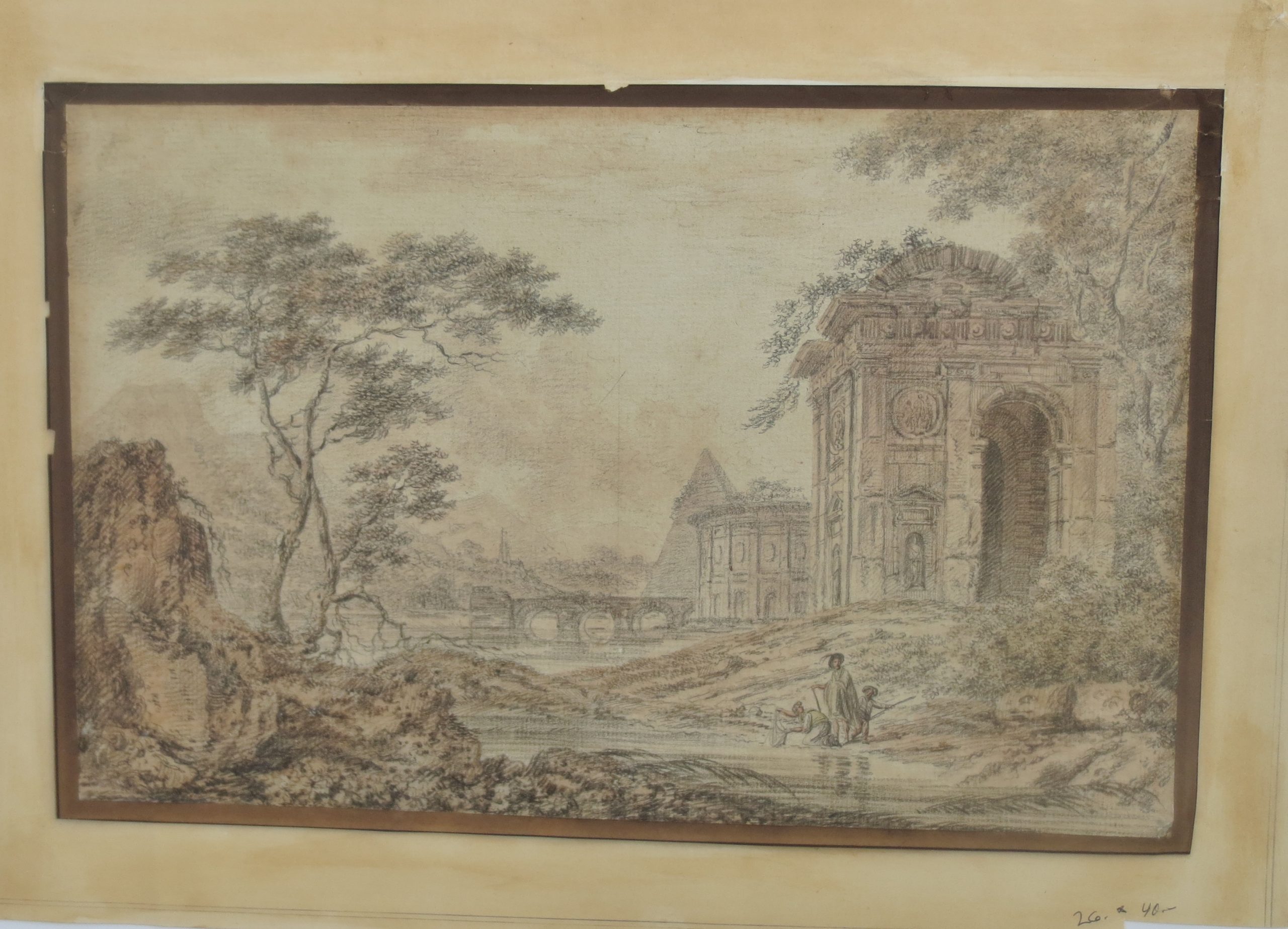Chaix was one of the lesser known but quite capable masters of quality finished drawings of both real and fanciful monuments seen in situ or charmingly gathered into imagined vistas. Born in Marseilles, Chaix studied and worked in Rome from 1771 to 1776 along with Joseph Benoit Suvée whose chalk drawings of Roman sites influenced Chaix’s own style. In later years, Chaix worked both in Marseille and Paris as a painter of largescale history paintings and architectural capriccios.
For Chaix and his relationship with the colony of French artists pursuing similar lines in Rome, cf. the useful notes and illustrations in Raymond Keaveney et al, Views of Rome from the Thomas Ashby Collection in the Vatican Library, London,1988, fig. 69 and pp. 249-251 & 289.Several of Chaix’s best Roman drawings found in the Horvitz Collection as published in Alvin J. Clark Jr. et al, Tradition & Transitions: Eighteenth Century French Art from the Horvitz Collection, Paris, 2017, No. 101, pp. 260-261, are close stylistic kin to the present sheet.
In the Horvath drawings, and several others viewed at auction and in the trade, Chaix rendered the texture and variances in flat wall surfaces as a mosaic of small blocks, each individually hatched in a manner more carefully structured than in Suvée’s somewhat less regular use of a similar device. In this and many other drawings from the Roman period, Chaix created a foreground ledge as repoussoir of a patchwork of clustered shadows established by energetic flows of zigzags and tangled lines around open areas of reserved light paper. His figures were quickly noted but structurally well-drawn showing with expressive actions.
Although Chaix’s fifty surviving drawings in Berlin were published half a century ago, in the excellent catalogue by Ekhart Berckenhagen, Die Französischen Zeichnungen der Kunstbibliothek, Berlin, 1970, Nos. 3026-2074, a modern monograph on the artist’s Roman period would go a long way now in clarifying Chaix’s distinctly subtle sensibility within the prevailing idiom of his circle in the Eternal City.

